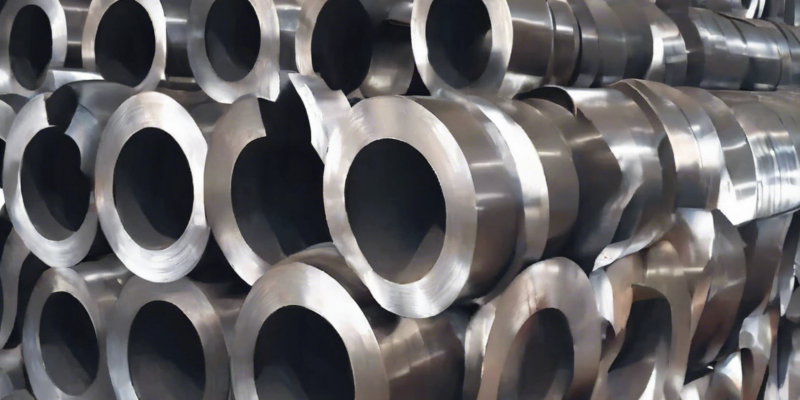Introduction
Investing in the stock market can be a lucrative endeavor, but it comes with its fair share of risks and uncertainties. One of the key factors that can impact an investor’s decision-making process is the fluctuations in share prices of a particular company. In this article, we will delve into the specific case of Rama Steel, a prominent player in the steel industry, and explore the various factors that influence its share price movements.
Company Overview
Before we analyze the share price fluctuations of Rama Steel, it is essential to understand the company’s background and operations. Rama Steel is a leading manufacturer of steel products in India, catering to a wide range of industries such as construction, infrastructure, automotive, and more. The company boasts a strong track record of producing high-quality steel products and has a robust distribution network across the country.
Factors Influencing Rama Steel Share Price Fluctuations
-
Industry Trends: One of the primary factors that can impact Rama Steel’s share price is the overall performance of the steel industry. Factors such as demand-supply dynamics, global steel prices, and government policies related to the steel sector can significantly influence the company’s stock value.
-
Economic Indicators: Macroeconomic indicators, such as GDP growth, inflation rates, and interest rates, can play a vital role in determining Rama Steel’s share price movements. A robust economy typically translates to higher demand for steel products, thereby positively impacting the company’s stock price.
-
Company Performance: The financial performance of Rama Steel, including revenue growth, profitability, and debt levels, can directly impact its share price. Investors closely monitor key performance indicators to assess the company’s financial health and growth prospects.
-
Competitive Landscape: The competitive environment within the steel industry can influence Rama Steel’s market position and, consequently, its share price. Factors such as new entrants, technological advancements, and pricing strategies of competitors can impact investor sentiment towards the company.
-
Regulatory Environment: Changes in regulations and policies related to the steel industry, such as trade tariffs, environmental norms, and labor laws, can have a significant impact on Rama Steel’s operations and, consequently, its share price.
Analyzing Share Price Fluctuations
In order to analyze the share price fluctuations of Rama Steel effectively, investors can employ various techniques, including fundamental analysis, technical analysis, and market sentiment analysis. By combining these approaches, investors can gain a comprehensive understanding of the factors driving the company’s stock price movements and make informed investment decisions.
Fundamental Analysis: This approach involves evaluating the intrinsic value of a company by analyzing its financial statements, industry position, management team, and growth prospects. Investors can use metrics such as price-to-earnings ratio, price-to-sales ratio, and return on equity to assess Rama Steel’s valuation and investment potential.
Technical Analysis: Technical analysis involves studying historical price charts and trading volumes to identify patterns and trends in a stock’s price movements. By using tools such as moving averages, relative strength index (RSI), and Bollinger Bands, investors can identify potential entry and exit points for trading Rama Steel’s shares.
Market Sentiment Analysis: Market sentiment refers to the overall attitude of investors towards a particular stock or the market as a whole. Factors such as news articles, analyst reports, social media trends, and institutional buying/selling activity can impact investor sentiment and, consequently, Rama Steel’s share price.
Mitigating Risks and Maximizing Returns
While share price fluctuations are an inherent part of stock market investing, there are several strategies that investors can employ to mitigate risks and maximize returns when trading Rama Steel shares.
-
Diversification: By diversifying their investment portfolio across different asset classes and industries, investors can reduce the impact of share price fluctuations in any single company, such as Rama Steel.
-
Long-Term Perspective: Taking a long-term investment approach can help investors ride out short-term share price volatility and benefit from the company’s growth potential over time.
-
Risk Management: Implementing risk management strategies, such as setting stop-loss orders, limiting position sizes, and conducting thorough research before investing in Rama Steel, can help investors protect their capital in the face of market uncertainty.
-
Staying Informed: Keeping abreast of the latest developments in the steel industry, monitoring Rama Steel’s financial performance, and staying informed about macroeconomic trends can empower investors to make well-informed decisions regarding their investments in the company.
Frequently Asked Questions (FAQs)
- What are the key factors that influence Rama Steel’s share price fluctuations?
-
Industry trends, economic indicators, company performance, competitive landscape, and regulatory environment are some of the key factors that impact Rama Steel’s share price movements.
-
How can investors analyze share price fluctuations of Rama Steel?
-
Investors can employ fundamental analysis, technical analysis, and market sentiment analysis to analyze the factors driving Rama Steel’s stock price movements and make informed investment decisions.
-
What strategies can investors use to mitigate risks when trading Rama Steel shares?
-
Diversification, long-term perspective, risk management techniques, and staying informed about industry developments are some strategies that investors can use to mitigate risks and maximize returns when investing in Rama Steel.
-
Why is it important to monitor macroeconomic indicators when investing in Rama Steel?
-
Macroeconomic indicators such as GDP growth, inflation rates, and interest rates can provide valuable insights into the broader economic environment, which can impact Rama Steel’s business operations and share price.
-
How does market sentiment influence Rama Steel’s share price movements?
- Market sentiment reflects investors’ perception of Rama Steel’s prospects and can be influenced by news articles, analyst reports, social media trends, and institutional buying/selling activity, thereby impacting the company’s share price.
In conclusion, understanding the share price fluctuations of companies like Rama Steel requires a multifaceted approach that considers various internal and external factors impacting the stock’s performance. By conducting thorough research, employing analytical tools, and staying informed about industry developments, investors can make informed decisions regarding their investments in Rama Steel and navigate the dynamic landscape of the stock market effectively.



Comments